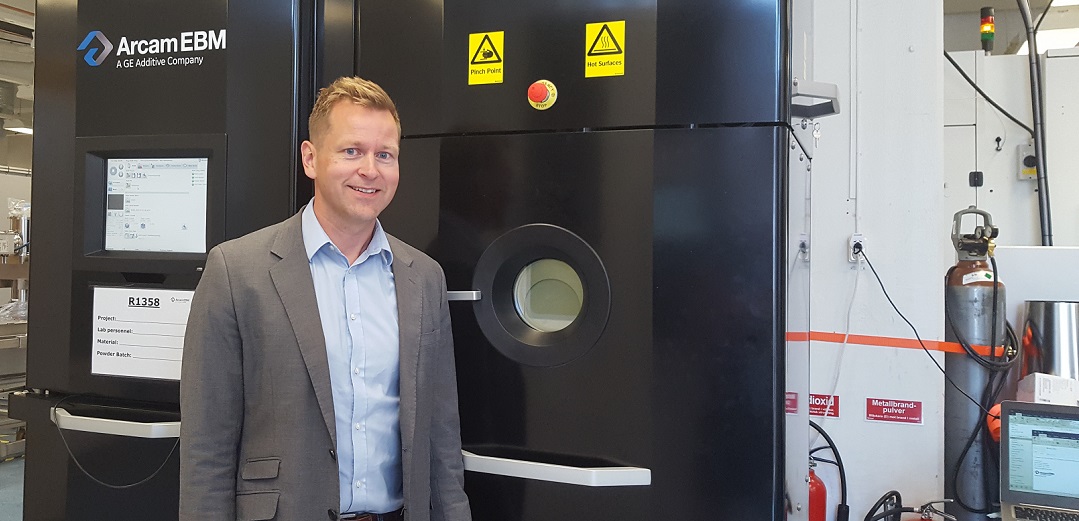Q&A with Isak Elfström
Arcam is opening the EBM A2X machine’s development mode at no cost to universities and academic institutes for material and EBM process development. Isak Elfström, Vice President, Research at Arcam EBM explains why and why now.
Q: Opening up the Arcam EBM A2X system is a bold move. Why are you doing it now?
For many years Electron beam melting (EBM) and the Arcam A2X has been a go-to system for academic researchers in materials science.
We enjoy a close working relationship with the academic community and the twenty universities and institutes currently using it. One thing we hear regularly is that faculty and students are hungry to push the boundaries of their field and fulfil the potential of additive.
That is music to our ears. Arcam’s own roots are in academia with the Chalmers University of Technology in Gothenburg. So, we know first-hand all the benefits and potential of a close working relationship between industry and academia.
That is why we’ve decided to further open up the A2X system’s development mode for material and process development, at no cost, for universities all over the world.
Q: What does opening up the system entail?
Academic organizations that are currently using the A2X can contact us now to request a hardware key that is connected to a specific machine and a nominated person.
Following review and an assessment of training needs, a key will be delivered in November this year that will unlock the development setting on the system. The key will allow researchers to access a wider range of parameters and enable the development of new materials and processes.
We see this as a first step in giving our customers in academia the possibility to customize how materials are melted and the Arcam team will work together with them to further enable process, sensor and hardware customization to unlock the true potential of the EBM technology. Rest assured though, the key does not unlock the security features on the system.
For universities and institutes not using A2X, but are keen to benefit from the initiative or explore integrating EBM into their research, we are also offering ten systems with special pricing for purchase.
Q: Ecosystems and communities are great, but how will universities cooperate with Arcam and themselves?
There are many arenas where we interact and exchange ideas and results, the two largest being Arcam’s user group meeting and the EBAM Conference arranged by University of Erlangen-Nuremberg.
Q: How does GE Additive and Arcam benefit by opening up the system?
We have only just scratched the surface of what is possible with EBM technology. With this initiative we hope to further encourage our academia customers to join us in exploring and showing the possibilities with this technology and in doing so influence our product development in the mid to long-term.
By opening up the A2X we also want to empower and inspire the next generation of engineers and materials scientists to fulfil the potential of additive. By removing constraints and barriers to make additive technology platforms and parameters as open as possible, we want these smart minds to think even more laterally, around corners and invent and innovate.
Q: Could you tell us more about universities or institutes who are already using the A2X to push the boundaries of materials science?
The A2X is designed to process titanium alloys as well as materials that require very high process temperatures, like titanium aluminide, Alloy 718 and refractory metals, which makes it suited for materials R&D.
It is installed in 13 universities and 7 institutes across North America, Europe and Asia and some of the research projects underway are truly breathtaking.
For example, the A2X has been used by the Oak Ridge National Laboratory in the US to show that with EBM technology it is possible to control the orientation of the resulting microstructure with high precision within a component.
And the University of Erlangen-Nuremberg in Germany has built a full-length single crystal CMSX-4 on an earlier version of the A2 platform. These are only some of the extraordinary results that has come out from our academic customers in the last few years.
Q: How can universities get involved?
In the first instance, any university or institute interested in learning more about EBM or the initiative can contact me directly and we can start the conversation.
